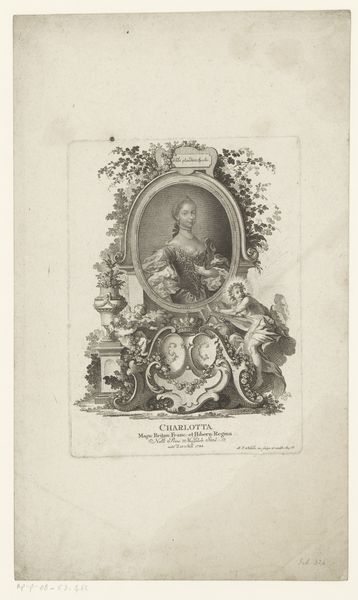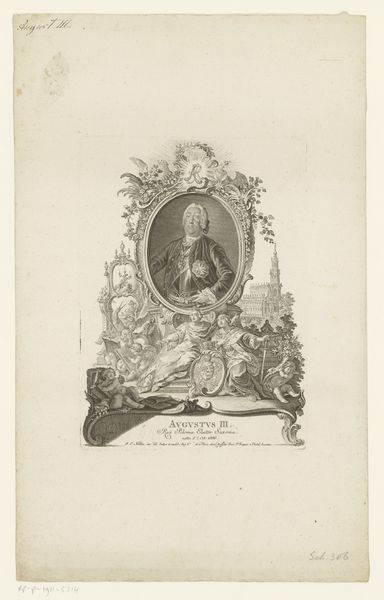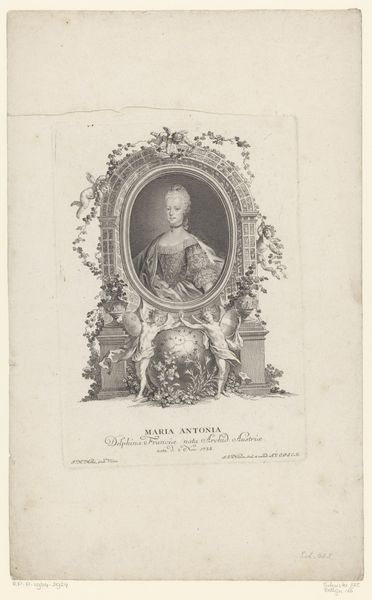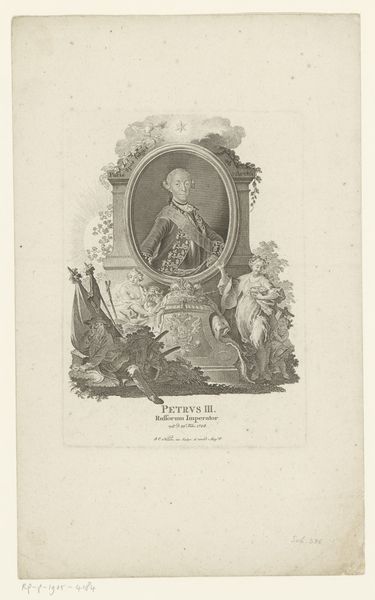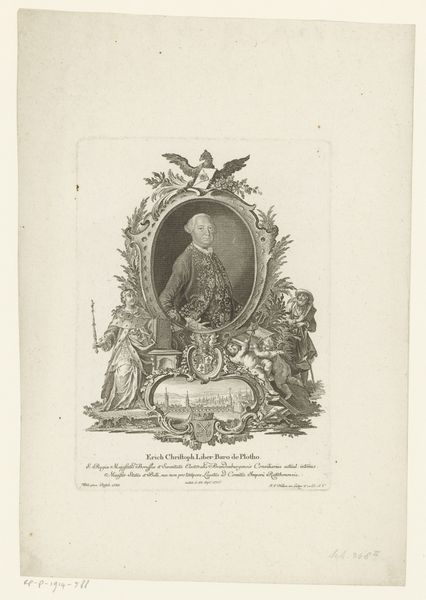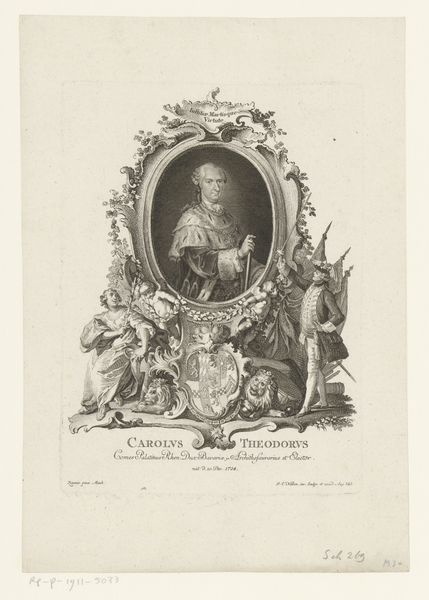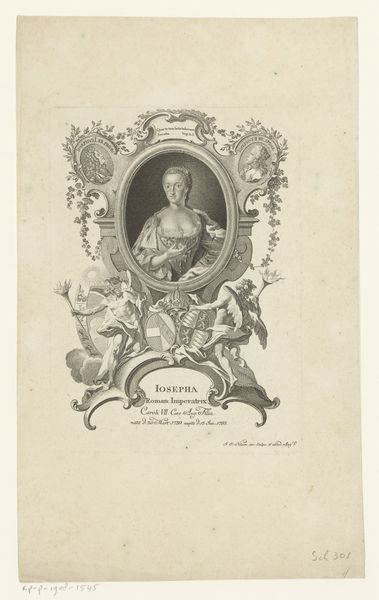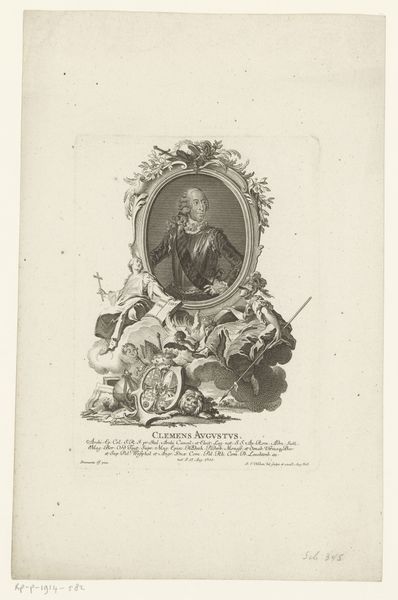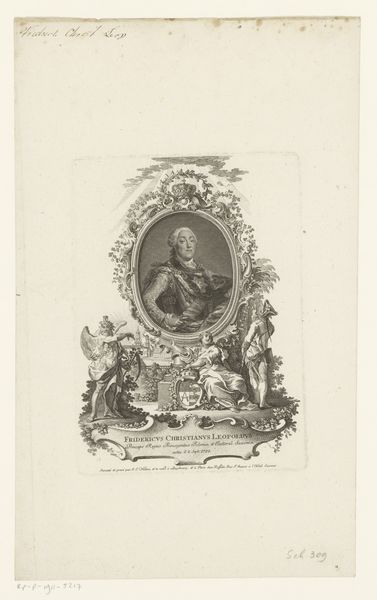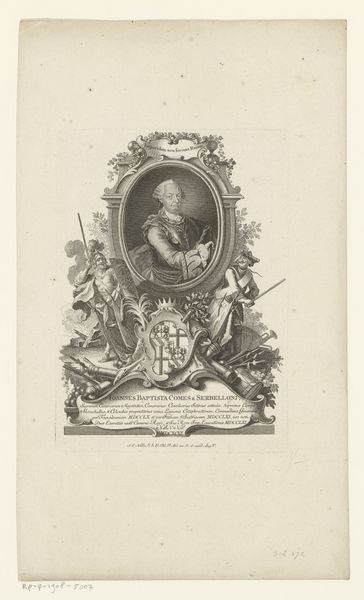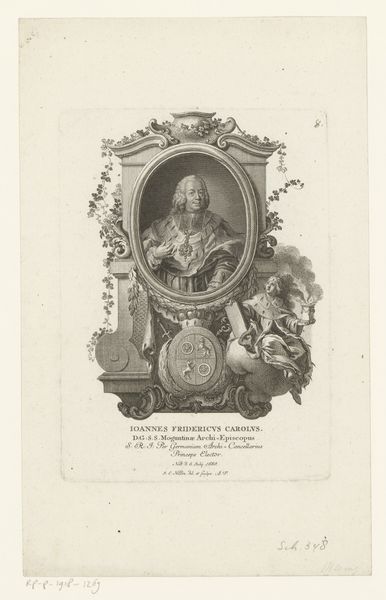
Portret van Sophie Caroline Marie, Markgräfin von Brandenburg-Bayreuth 1752 - 1788
0:00
0:00
johannesaiasnilson
Rijksmuseum
Dimensions: height 220 mm, width 161 mm
Copyright: Rijks Museum: Open Domain
Curator: This engraving by Johann Esaias Nilson, made between 1752 and 1788, presents us with a portrait of Sophie Caroline Marie, Margravine of Brandenburg-Bayreuth. Editor: It's strikingly formal, wouldn't you say? Everything from the tight framing to the heraldic symbols at the base speaks of an entrenched power structure, doesn't it? The starkness of the monochrome intensifies that feeling, almost like a historical document. Curator: Absolutely. Nilson expertly uses the visual language of Baroque portraiture. Look at the allegorical figures flanking the central portrait, and the way the floral decorations frame the image—a visual shorthand for rank and status. She appears almost like an icon. Editor: It makes me wonder about the social pressures that formed Sophie Caroline Marie. What were the expectations placed upon her as a noblewoman during that era, how much freedom did she have? The heraldry implies duty, lineage, and control… how did those constraints shape her life? Curator: Well, symbols were crucial. The coat of arms below the portrait are not just decorative, they communicate family history and legitimacy. Note the way the oval frame suggests an almost iconic presence; she is preserved for posterity within this stylized image. These are more than likenesses, they're carefully constructed representations meant to reinforce power and inspire respect. Editor: The pose strikes me as guarded, perhaps even melancholic. What did it cost her, and women like her, to maintain those carefully constructed roles? I want to look beyond the surface and excavate the lives of the people contained within the images of this past. It would be fascinating to understand how Sophie Caroline Marie saw her position and her legacy. Curator: And the tradition of these portraits serves as a bridge between generations. Each symbol chosen, each deliberate composition choice is meant to create a lasting impression on the viewer and keep alive memories of the individuals. Editor: Ultimately, these works invite us to look closely not just at the surface, but beneath, asking deeper questions about who and what we choose to remember, and who gets to shape that narrative. Curator: A wonderful point. These layered meanings offer continuous reflections on legacy, power, and individual representation over time.
Comments
No comments
Be the first to comment and join the conversation on the ultimate creative platform.
